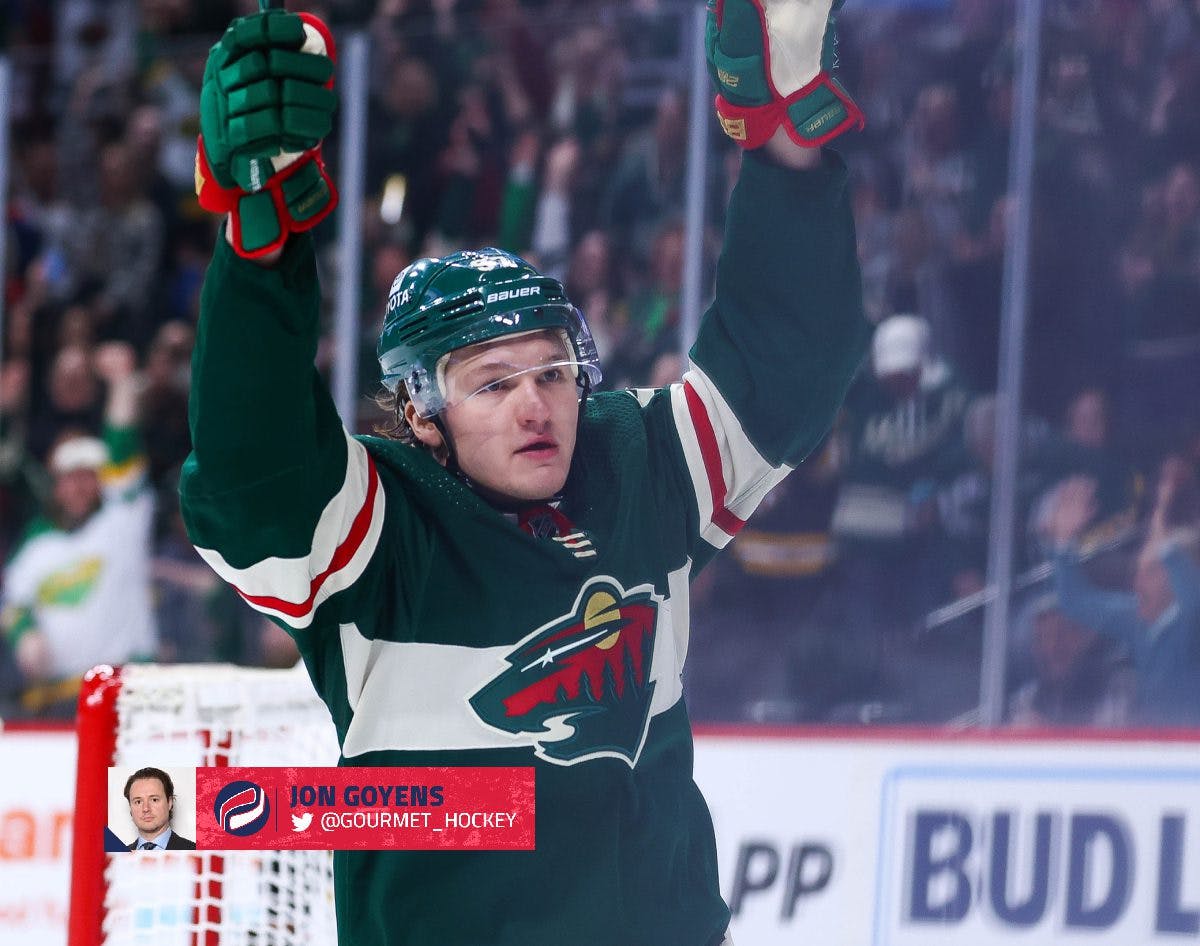How teams are using ‘Trap Goals’ to score in the Stanley Cup playoffs

A few months back, I wrote an article for The Coaches Site about a term I coined: ‘Trap Goals.’
I came up with the idea after working remotely for an NHL head coach during the 2020 and 2021 Stanley Cup playoffs.
During pre-scouts and analyzing in-game play, I noticed successful teams effectively used the back of the net to open up the offensive zone. They make a living in the “trapezoid” area, the only area below the goal line where the goalie can play the puck, hence the name “trap goals.”
The best teams use it as a strategy to alleviate pressure, to get the defensive team running around and to create chaos or mismatches.
The best offenses, like a fire, crave oxygen. They want space.
Defensive teams seem to buy into more defensive schemes in the playoffs. They typically aim to suffocate the offense. They pack it in around the front of their net. Teams usually aren’t worried about play behind the net. Unless you’re Trevor Zegras, it’s hard to directly score from the “trap.”
But the best teams have found a way to create offense from within the trapezoid area.
As part of the study, I determined how the puck entered the ‘trap’ area, then how many seconds after the puck exited the ‘trap’ area did it enter the net. It would only count as a ‘trap goal’ if the puck was in the net within nine seconds of playing through that area.
The results were interesting. I tracked the first two weeks of this regular season. During that stretch, a quarter of the 493 goals scored at even-strength were ‘trap goals.’ On top of that, 25 percent of all 5-on-5 goals were scored with the puck in the trapezoid area.
Those numbers have actually increased so far in the playoffs.
Through the first four games of all eight first-round series, 29 percent of the 117 even-strength goals were ‘trap goals.’
Twenty of those goals were in the net within five seconds of being in the trapezoid. Another 14 goals were scored within nine seconds.
Teams have used the trapezoid to go from low to high, passing the puck to the defenseman at the point, to create 14 of those even-strength ‘trap goals.’ It has supported my theory that utilizing the trapezoid can not only open up the entire zone against strong defending teams, but it can be used to get all five players on the ice involved in the play.
It also makes it more difficult on the goaltender. Reading the play behind the net is difficult for a lot of goalies, as they aren’t able to scan the play as easily and they can’t predict where the play is going. Many go down on one knee or into the reverse VH setup when the puck is below the goal line, which also adds movement to their workload.
Here are a few video examples of recent ‘trap goals,’ proof that “getting pucks deep” isn’t just a boring cliche but often makes for efficient offense – particularly during the playoffs:
Hedman rims it through the ‘Trap’
Victor Hedman pinches in and fakes a shot, then uses the trapezoid area to rim it Nikita Kucherov on the weak side, where he is waiting with lots of space. Steven Stamkos then gets lost from defensive coverage and opens up for a one-timer with time for a moving screen at the net from Hedman, who started the play.
Kaprizov uses the ‘Trap’ three times
The trapezoid is used three times during this sequence. The Wild win the offensive faceoff and Jared Spurgeon finds Kirill Kaprizov, who gets lost behind the net. That creates the first scoring chance. The puck is recovered by Spurgeon, who rims it back down again behind the net to Kaprizov, who carries it out and cycles back again to Ryan Hartman. They activate the ‘D’ so well. Spurgeon recovers the chip through the trapezoid and finds Kaprizov. It’s tough for the Blues to figure out who is supposed to cover whom in this situation.
Kapanen gets Shesterkin moving
Evgeni Malkin remains dogged on K’Andre Miller, steals it and sends it low to Kasperi Kapnen, who shows us his skills with a deceptive pass back to the first post for a Malkin goal.
Blues’ Buchnevich finds Kyrou
Pavel Buchnevich and the Blues recognize they need to place and chase, recover the puck, and skate through the trapezoid with a cycle pass that opens the slot to find Jordan Kyrou. The Wild lose their coverage.
____
Former QMJHL head coach Jon Goyens has 28 years of coaching experience, from the lowest levels of minor hockey all the way to serving as a special consultant for an NHL team during the Stanley Cup playoffs. He is the winningest coach in the history of the Quebec Midget ‘AAA’ league with the Lac St. Louis Lions and has helped develop 25-plus players to be selected in the NHL Draft. He has also worked as an individual skills and development coach with future Hockey Hall of Famer Hilary Knight, as well as NHL players such as Jonathan Drouin and Mike Matheson.
_____
POINTSBET CANADA IS LIVE IN ONTARIO

PointsBet Canada has officially launched in Ontario! Get more details right here!